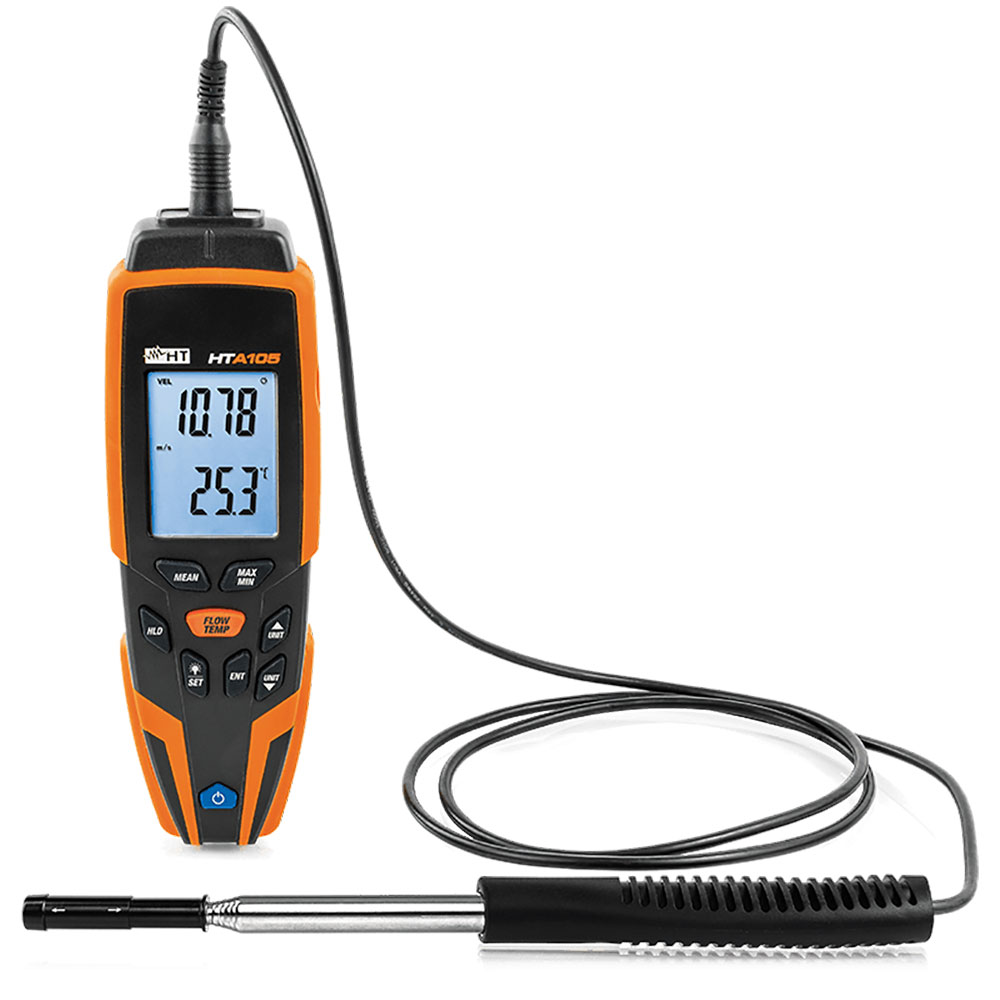Leading Features to Search For in an Efficient Anemometer for Accurate Wind Measurement
All You Required to Understand About Anemometers: Exactly How They Function, Why They Issue, and Where to Make use of Them
Anemometers, though usually overlooked in the realm of scientific instruments, play a crucial role in different fields, offering important understandings right into wind rate and airflow patterns. As we dig into the ins and outs of anemometer technology, we will reveal the internal functions of these tools, their significance, and the essential factors to consider when selecting the appropriate anemometer for particular applications.

Anemometer Essentials
A crucial tool utilized to determine wind rate and direction, the anemometer plays an important role in meteorology and different industries. An anemometer generally consists of three or four mugs that turn in the wind, a vane that points into the wind, and sensing units to track the turnings or movements. By computing the rotations or activities over a certain time duration, the anemometer can determine wind rate. The vane aids figure out wind direction by aiming right into the wind, offering important information for climate forecasting, aviation, maritime procedures, environmental monitoring, and wind power applications.
There are different kinds of anemometers offered, consisting of mug anemometers, vane anemometers, hot-wire anemometers, and sonic anemometers, each with its distinct functions and applications. Mug anemometers are commonly used for fundamental wind rate dimensions, while vane anemometers are chosen for directional measurements.
Principles of Anemometer Operation
Structure on the foundational understanding of anemometer fundamentals, the principles of anemometer operation illuminate the mechanics behind wind speed and instructions measurements. Cup anemometers, for instance, have three or even more cups that capture the wind, causing them to rotate faster as the wind rate boosts. Hot-wire anemometers rely on a heated cord that cools down as wind passes over it, with the price of cooling establishing the wind speed.
Relevance of Anemometers
Anemometers play an important duty in measuring wind rate and instructions, giving essential data for weather projecting, climate studies, ecological surveillance, and aviation operations. Meteorologists rely on anemometers to gather accurate wind data, aiding them understand weather patterns, forecast tornados, and problem timely warnings to the public. Wind farm drivers use anemometers to examine wind conditions and make best use of power manufacturing from wind turbines.
Applications Across Numerous Industries
Applications of anemometers span throughout varied markets, showcasing their convenience and utility past weather forecasting. In the renewable resource sector, anemometers play an essential role in assessing wind problems for wind ranch placements, making certain ideal power manufacturing. Industries like building my website and mining use anemometers to keep track of wind rates, essential for safety protocols, especially when working at heights or in open-pit mines where solid winds can pose threats. Anemometers are likewise essential in the aeronautics market, assisting pilots in understanding airspeed and wind instructions for risk-free take-offs and touchdowns. The maritime field take advantage of anemometers for ship navigating, helping seafarers prepare for climate modifications and readjust paths accordingly. In agriculture, anemometers aid farmers in handling plant spraying by supplying real-time information on wind speed to stay clear of drift. Anemometers discover applications in A/c systems to enhance air flow and boost energy performance in buildings. The diverse use situations of anemometers underscore their value throughout numerous industries, highlighting their crucial function in improving operational safety and security and performance (anemometer).

Selecting the Right Anemometer for Your Requirements
Selecting the proper anemometer tailored to your certain demands is crucial for acquiring precise wind speed and instructions measurements. When picking an anemometer, think about aspects such as the desired application, required dimension variety, environmental conditions, and desired features. For general objectives, a cup anemometer appropriates for measuring wind rate, while a vane anemometer provides wind direction data. Hot-wire anemometers are excellent for reduced airspeed dimensions, and ultrasonic anemometers offer high accuracy and toughness.

Conclusion
Finally, anemometers play an important role in measuring wind speed and direction throughout numerous industries. Understanding the concepts of anemometer procedure is important for choosing the ideal tool for details demands. From meteorology to air travel, anemometers are crucial tools for making certain and accumulating exact information security in various applications. It is necessary to take into consideration the relevance of anemometers in order to make go to these guys informed choices when picking the most appropriate tool for gauging wind problems.
There are various kinds of anemometers readily available, consisting of mug anemometers, vane anemometers, hot-wire anemometers, and sonic anemometers, each with its unique attributes and applications. Cup anemometers are typically utilized for standard wind rate measurements, while vane anemometers are preferred for directional measurements. Hot-wire anemometers are ideal for low airspeeds, and sonic anemometers are ideal for high-precision dimensions in research study and industrial settings.Structure on the foundational understanding of anemometer fundamentals, the concepts of anemometer procedure clarify the mechanics behind wind speed and home direction dimensions. For general purposes, a cup anemometer is ideal for measuring wind rate, while a vane anemometer provides wind instructions data.